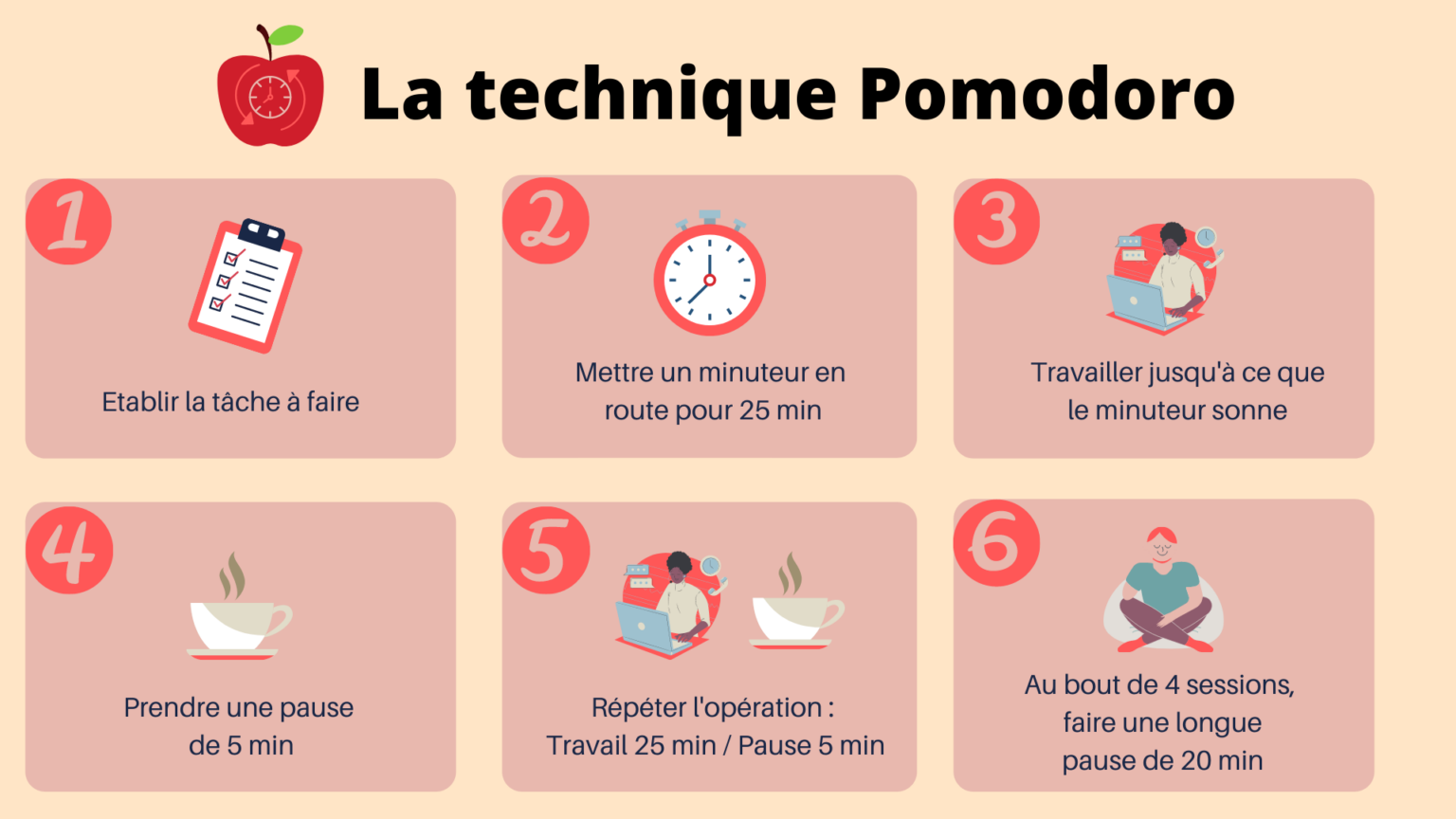The emergence of telecommuting, accelerated by the health crisis, has changed the way people relate to work. Working remotely has had positive impacts on employee performance and comfort, but it has also brought its share of challenges. Workers had to quickly learn to organize themselves differently, and adopt new working methods to ensure a certain productivity for the missions entrusted to them.
So how can you optimize your performance when teleworking? Discover 10 neuroscience tips for staying focused and efficient when working from home.
1. CREATE A PHYSICAL SPACE DEDICATED TO WORK
To promote concentration and productivity, it’s essential to set up a specific office area in a quiet, well-lit location, away from any distractions (television, dining room, etc.)
Don’t hesitate to redesign your workspace to make it comfortable and stimulating. This means choosing the right furniture, lighting and colors, all of which have a strong impact on motivation and concentration.
2. ORGANIZE YOUR WORKING TIME
A major advantage of telecommuting is the flexibility it brings. It’s possible to set up a work routine to suit your moments of optimum productivity. However, if you want to work efficiently, you need to manage your schedule and plan your tasks according to your priorities.
A few tips:
- Draw up a to-do list for the day, then for the week.
- Do the hardest work when you feel most productive.
- Take regular breaks.
3. TAKE BREAKS - POMODORO TECHNIQUE
To stay productive and efficient at work, you need to know how to take time out. Giving the brain and body a healthy break develops intellectual agility, consolidates memory and strengthens the ability to concentrate. As a result, we make better decisions and optimize our performance when teleworking.
But rest time doesn’t mean doing nothing; it’s essential to get moving from your workstation: get up, take a walk, stretch to allow the body to release accumulated tension.
- Tip: Use the Pomodoro technique.

Developed in the 80s by Francesco Cirillo, this method optimizes time management and concentration. The technique consists of alternating 25-minute work sessions with 5-minute breaks, using a timer (1 session 25/5 = 1 pomodoro). After 4 pomodoros, the break is extended to 20 minutes.
The standard rhythm of the Pomodoro technique can of course be adapted to suit individual needs. People who find it difficult to concentrate for long periods can work in 10-minute sessions, each with a 2-minute break. Then gradually increase the difficulty. Others, on the other hand, can work for 50 minutes at a time, with longer breaks between each session.
4. PRACTICING MEDITATION
Practising meditation has very positive effects on emotional intelligence, mental health and work efficiency. That’s why many professionals recommend exercises like this one to help you focus on the present moment and better manage your stress and emotions (5 min):
- Sitting or lying down
- Close your eyes and inhale deeply through your nose.
- Exhale slowly through the mouth.
- Focus your attention on the air entering and leaving your lungs, and the movements of your belly and shoulders.
- If your mind starts to wander, first welcome the new thought or emotion, then gradually refocus your attention on your breathing.
Done regularly enough, this mindfulness exercise can significantly improve cognitive endurance, and therefore performance and concentration when telecommuting.
Read our article on the subject: A neuroscientific approach to mindfulness – What impact does meditation have on your brain?
5. WORK ON ATTENTION
Attention is an essential cognitive process for concentrating on daily work. It is highly dependent on stimuli from the external environment and the individual’s internal state. Teleworking tends to put a strain on this attentional process, as there are so many sources of distraction at home. However, attention can be improved by working on it regularly.
One exercise involves looking at an object for a while, and visualizing all its component parts. This is followed by a memorization exercise, in which the aim is to describe the object in minute detail on a sheet of paper.
6. LIMIT DISTRACTIONS
When telecommuting, it’s easy for our attention to get caught up in everyday notifications. It’s therefore essential to keep external distractions and solicitations to a minimum.
- Tip : sit down in a quiet place and turn off any notifications that might distract you, such as those from social networks, VOD platforms or advertising.
This allows us to remain in a state of Flow – a mental state we reach when we’re so captivated by what we’re doing that we forget the notion of time.
7. FRESH AIR AND ACTIVITY
When you telework, you tend to sit at your desk all day long. Yet getting some fresh air at least once a day is essential for oxygenating the brain. Taking a few steps boosts blood flow to the brain and stimulates the prefrontal cortex, making you feel more alert. A study by University of Sao Paulo in which researchers analyzed that 10 minutes of exercise is all it takes to boost memory.
- Tip for reconciling performance and well-being when telecommuting : use the time previously spent in transport to go for a walk. And if you’re short of time, a few stretches in front of your home are an effective way to energize yourself and get back to work more efficiently.
8. COMMUNICATE WITH YOUR TEAM
Working remotely complicates social relations. It can be difficult to motivate employees and maintain team cohesion when you can’t see them. And yet, maintaining strong links between employees is an essential pillar of corporate work.
- Tip: Communication! It’s important to organize regular check-ins with your colleagues to hear their news, share tips and best practices, and help them deal with the obstacles they encounter. Organizing regular videoconferences, coffee breaks or virtual aperitifs, and setting up an online workspace or WhatsApp group are all good ways of maintaining a friendly atmosphere within the team.
9. DRESS FOR WORK
This important step should not be neglected when telecommuting: you need to prepare yourself as if you were actually going to work. In fact, styling and dressing your hair allows your brain to set in motion a new dynamic and put yourself in the right situation. This boosts your self-confidence, and consequently your performance for the day.
Because keeping to a routine similar to the one we have at the office helps us to prepare mentally for the day’s work ahead.
10. KEEP WELL HYDRATED
Finally, don’t forget to stay well hydrated throughout the working day. Water has a beneficial effect on our concentration and energy levels. Dehydration leads to fatigue and headaches. Drinking water regularly, just like eating well when telecommuting, is therefore essential to improving performance.

